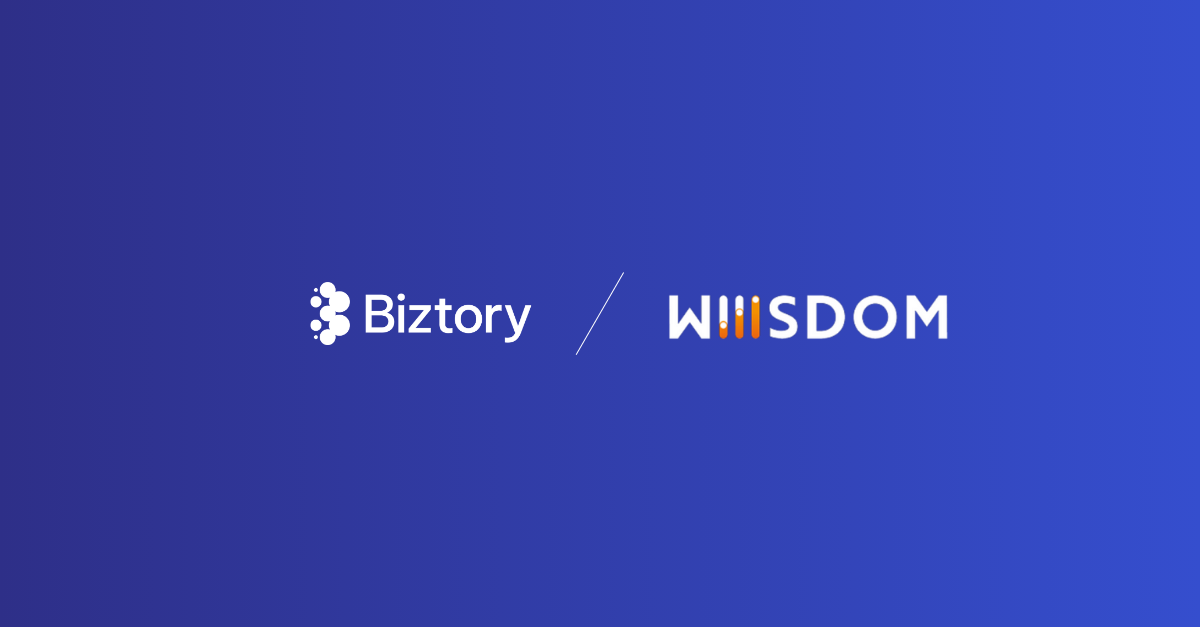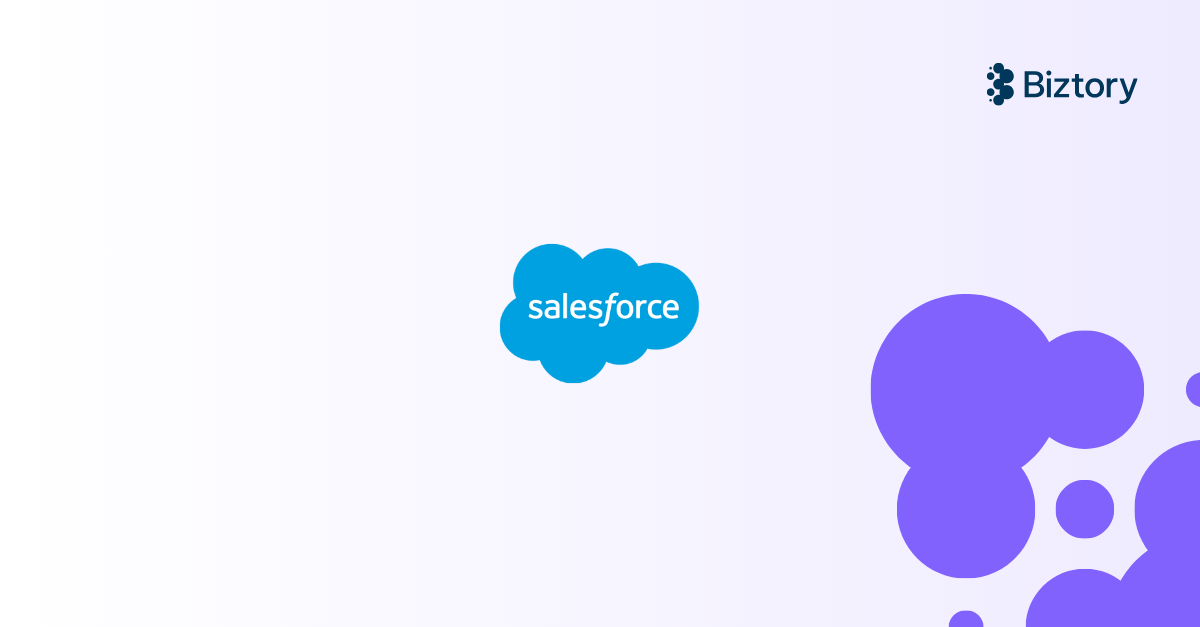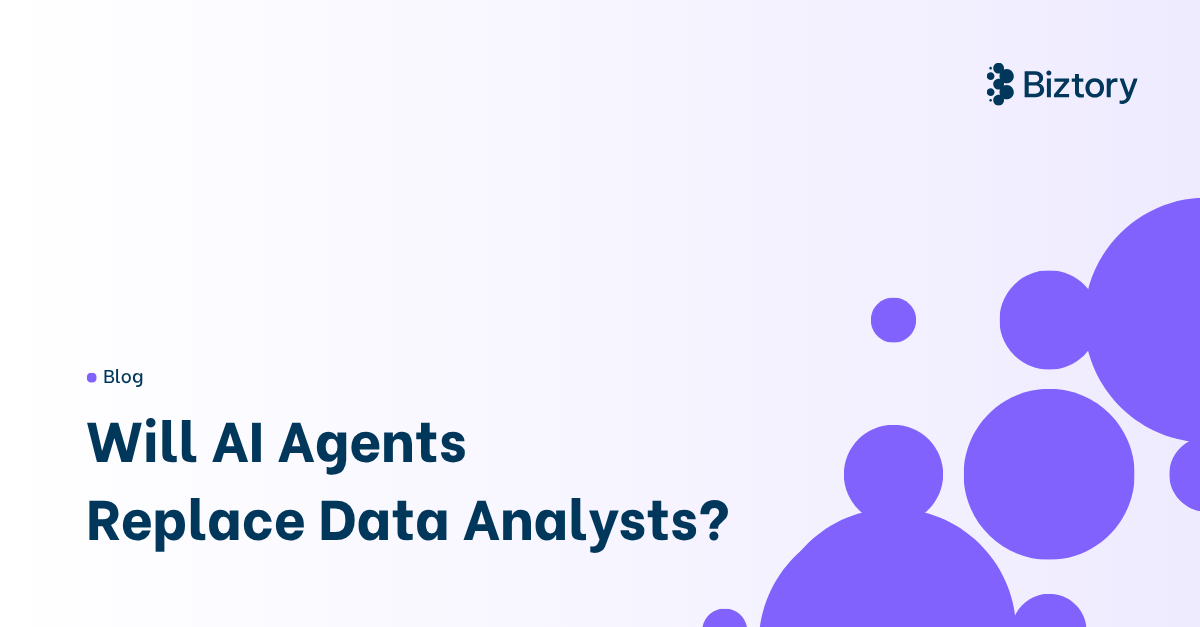Introduction
As many of you already may know, Salesforce acquired Tableau in June 2019 for about $15,7 billion. This acquisition means a collaboration between the #1 CRM platform and the #1 visualization platform. When I read the news, a lot of different questions popped up into my head. What does this mean for Tableau? How is Tableau going to fit into this Salesforce family? Is the brand Tableau still a thing? What does this mean for the product pipeline? Is Tableau still going to be available to non-Salesforce customers? How is Tableau going to integrate into the Salesforce platform?
In an interview with GeekWire, Adam Selipsky mentioned that the merger is going to bring value to as well Salesforce users as Tableau users.
"I think that’s because the value for customers, both for Tableau customers and for existing Salesforce customers, to me anyway, is just really self-evident. Salesforce has been incredibly consistent and overt and determined to let everybody know that they want to help accelerate Tableau’s existing mission. We have a seven-word mission statement, “We help people see and understand data,” and they just want us to go faster on that journey. They’ve got so many assets on the technology side, on the field resources side that we get to turn the dial on a time machine and just get there faster."
Of course this doesn’t tell much and it doesn’t answer the questions above. Therefore some deeper research is needed.

Tableau and Salesforce: What we know
Salesforce started in May 2017 by buying Mulesoft, an integration platform. By increasing demand and interest from Salesforce users in Mulesoft, it became clear that the Salesforce platform was missing an analytics part. The lack of a powerful way to visualise the result of integrations done by Mulesoft was a weakness in Salesforce’s ecosystem.
Marc Benioff, CEO and co-founder of Salesforce, mentioned this during Dreamforce last year.
As we've integrated Mulesoft, we realised we need to enhance our analytics. Of course we have done a phenomenal job with Einstein Analytics and artificial intelligence-based analytics, and we have extended that with Marketing Analytics, but the most exciting thing happened this year when we acquired Tableau.
(Marc Benioff, CEO of Salesforce, Dreamforce 2019)
Einstein Analytics is also mentioned in the quote above. Einstein Analytics is an easy to use artificial intelligence application that only requires the push of button. Predictions, next-best-actions, clustering, … are all done by feeding data into Salesforce. Everything else is done by the powerful calculating engine of Einstein. Combining Einstein Analytics with the stunning visualisations of Tableau, would add value to both platforms.
Because both companies are not fully integrated yet, Tableau is going to remain a separate product (much like Mulesoft in the Salesforce ecosystem) as far as we know. Customers can still buy Tableau without buying Salesforce and vice versa. Of course opportunities present themselves by combining Salesforce’s and Tableau’s user base.
For the moment, Tableau is not going anywhere and will be a brand of Salesforce. This is something that we can already notice when looking at the customer 360° view by Salesforce. The logo of Tableau is visible and will take care of the analytics part of the customer view.
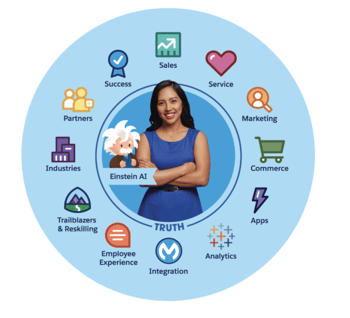
What do we hope for?
Our hopes are high when it comes to the merger between Salesforce and Tableau. The possibilities of enhancing Tableau with Salesforce features do open a lot of different use cases.
The first thing that comes to mind is Einstein Analytics. Like already mentioned above, Einstein Analytics is a artificial intelligence platform build by Salesforce. It’s really powerful and can give insights into data that other tools can’t. Our hope is Einstein Analytics will become available in as well Tableau Desktop as Tableau Prep.
The Analytics pane in Tableau desktop could significantly be enlarged. Currently forecasting, clustering and trend lines are available in Tableau desktop (and more predictive model features coming as from 2020.3). Integrating other Einstein Analytics features like profiling etc. would provide added value to Tableau Desktop.
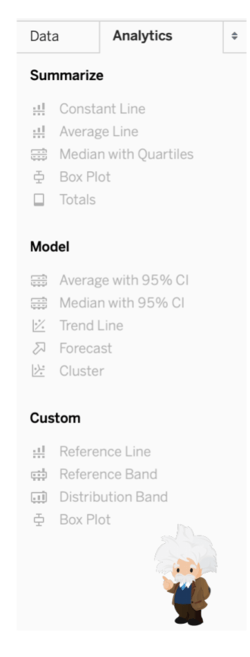
Tableau Prep Builder could also increase value by integrating with Einstein Analytics. Imagine the possibility of connecting to salesforce, dragging and dropping an Einstein Analytics object in the flow, configure the input parameters and voilà. This is artificial intelligence at your fingertips. It even be more mind blowing if other data sources than Salesforce could be used to fed Einstein Analytics (now I’m dreaming out loud).
Currently some development is already done that follows that same logic. John Hegele has created TabStein which uses the TabPy (Tableau’s Python integration) in order to leverage the power of Einstein Analytics. More information on TabStein can be found here.
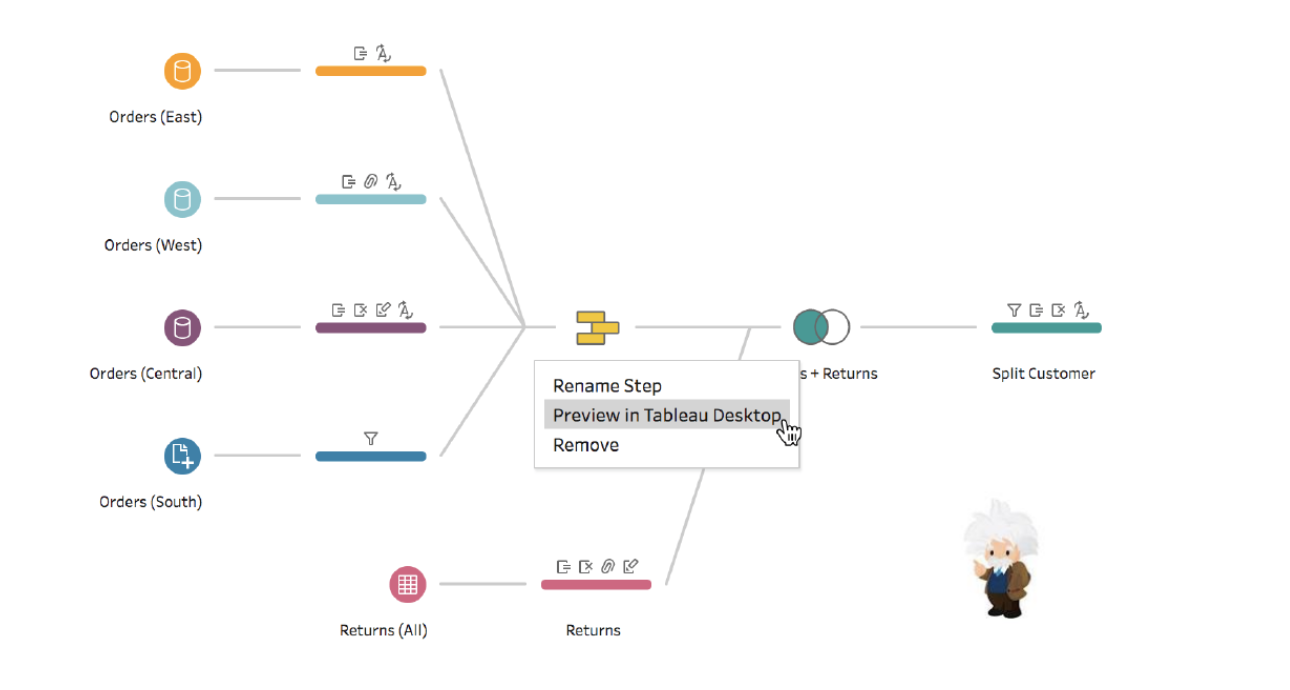
The second element we could hope for is an easy possibility to embed Tableau dashboards into Salesforce. Currently different possibilities exist on how to embed Tableau into Salesforce. The main embedding tracks are using WEBTAB, VisualForce pages or Salesforce Canvas Adapter. If the dashboards need to be filtered automatically to a certain account/opportunity/… , some code is needed. Having the possibility of embedding Tableau and Salesforce via a user-friendly interface would also unlock major use cases (like having extra-Salesforce data in the same application).
Also some development has been done around this second element. Tableau is currently developing the Tableau Lightning Web Component (TLWC). This created a component within the Salesforce universe which makes it very easy to embed and configure Tableau into Salesforce. For more information about this component (still in bèta at the time of writing), can be found here.
Finally a third hope I would like to share is the combination of the huge user base of Salesforce and Tableau. Salesforce clients adopting Tableau or the other way around should be the goal.
Obviously there are a lot of other ideas that I did not tackle in this blog post. These are just some of the first ideas I’ve had since the merger was announced. The only thing we currently know for sure is that it remains Tableau as a separate brand in the Salesforce universe.
It will be very interesting to see what the future holds for Salesforce and Tableau. No doubt that, just like in every serious relationship, they will make each other better.
Interested to get started with using Tableau and Salesforce together? Rewatch out free online Skill-up here.
If you have any further questions about Salesforce and Tableau, please feel free to get in contact with us!
